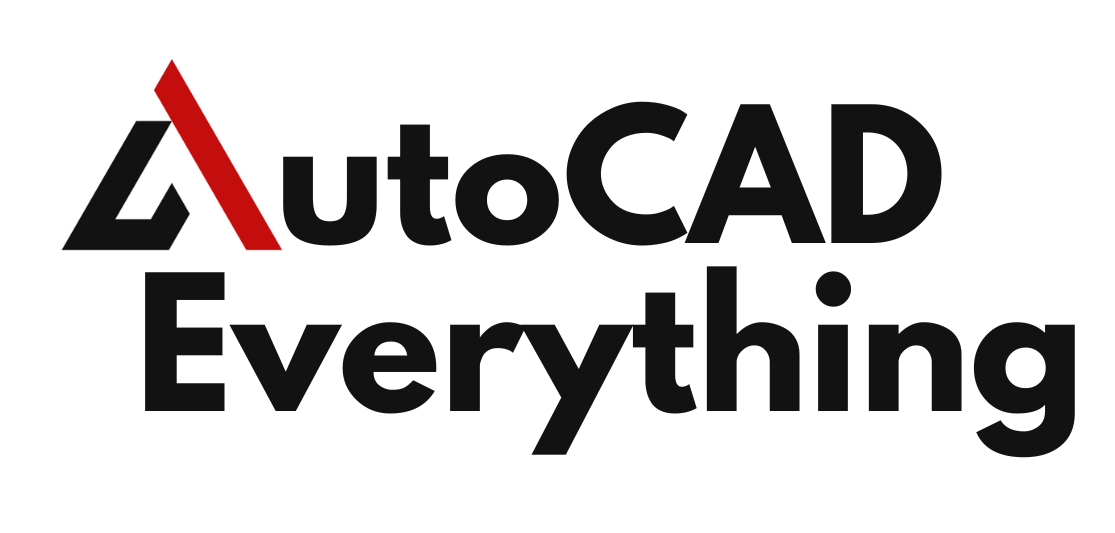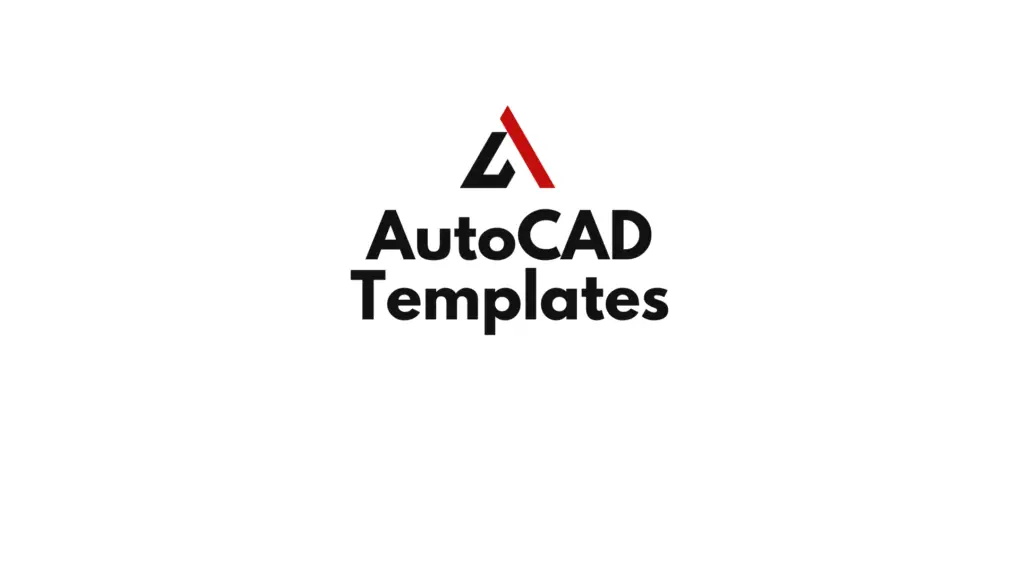Introduction
Consistency and efficiency are critical in CAD workflows, especially for larger projects or teams collaborating across multiple drawings. In AutoCAD, the use of templates (.DWT files) helps ensure that every drawing adheres to the same standards, saving time and reducing errors. By creating and using templates, designers and engineers can maintain uniformity in layers, dimension styles, text formatting, title blocks, and other drawing settings. This guide explores how to effectively use and create AutoCAD templates to standardize your drawing practices and streamline your workflow.
Table of Contents
What Are AutoCAD Templates (.DWT Files)?
AutoCAD templates are pre-configured drawing files that contain settings, styles, and layouts commonly used in specific types of projects. The file extension for a template is .dwt, which stands for Drawing Template. Templates serve as a starting point for new drawings, ensuring that all relevant standards are in place before any design work begins.
Key Features of AutoCAD Templates:
- Layers and Layer Properties: Predefined layers for different drawing components such as walls, electrical circuits, and furniture, with specific line types, colors, and line weights.
- Dimension Styles: Consistent dimensioning, including units, precision, and arrow styles.
- Text Styles and Fonts: Pre-configured text settings for labels, annotations, and titles.
- Title Blocks: Standardized title blocks for project information such as drawing titles, dates, and sheet numbers.
- Units and Scales: Pre-set drawing units (millimeters, inches) and scales for consistency across drawings.
Why Use AutoCAD Templates?
Using templates in AutoCAD has several advantages, particularly when working on complex projects that require multiple drawings or when collaborating with a team:
- Time Efficiency: Templates eliminate the need to set up drawing standards from scratch every time. All predefined settings, such as layers and dimension styles, are already in place.
- Consistency Across Projects: Templates ensure that all drawings in a project or organization adhere to the same formatting, reducing errors and inconsistencies.
- Improved Collaboration: Team members using the same template will have uniform settings, making it easier to share, review, and modify drawings.
- Compliance with Industry Standards: Templates can be tailored to meet industry or company-specific standards, ensuring that all drawings comply with regulations or client requirements.
How to Use AutoCAD Templates (.DWT Files)
Using a template in AutoCAD is straightforward. The process involves selecting a template at the start of a new drawing to apply all predefined settings.
Step 1: Opening a New Drawing from a Template
When you start a new project in AutoCAD, you can open a new drawing based on a template file instead of starting from scratch.
- Launch AutoCAD and go to File > New or type
NEWin the Command Line and press Enter. - Select a Template: In the Select Template dialog box, choose a pre-existing template (.dwt) that best suits your project needs. AutoCAD provides several built-in templates, or you can browse for custom templates created by your team.
- Start Designing: Once the template is selected, AutoCAD will load the drawing with all predefined settings—such as layers, dimension styles, and title blocks—ready for you to start designing.
Step 2: Saving a Drawing from a Template
When you’re working from a template and need to save your drawing:
- Go to File > Save As.
- Choose DWG Format: AutoCAD drawings created from templates are saved in the DWG format, which is the standard file format for all working drawings in AutoCAD.
- Name Your Drawing: Assign a unique file name and save it in the desired location. The drawing will maintain all settings from the original template.
How to Create a Custom AutoCAD Template
Creating your own custom AutoCAD template can significantly improve efficiency, especially for projects that require specific settings and standards. Follow these steps to create a DWT file tailored to your workflow:
Step 1: Set Up Drawing Preferences
Start by creating a new drawing or modifying an existing one with all the settings you want to standardize:
- Layers: Use the
LAYERcommand to create and define layers for different components of your drawing. Assign appropriate colors, line types, and line weights to each layer. - Dimension Styles: Use the
DIMSTYLEcommand to set up dimension styles that control how dimensions appear in your drawing. This includes units, arrow types, text size, and line spacing. - Text Styles: Set up text styles using the
STYLEcommand. Define fonts, text heights, and alignment for annotations, labels, and titles. - Title Blocks: Insert a standard title block that includes your company’s name, project information, drawing number, and other essential details. Use fields to automate information like dates and sheet numbers.
- Units and Scales: Define the units (e.g., millimeters or inches) and scales in the drawing settings to match your project requirements. This ensures that every drawing created from the template uses the correct scale and measurements.
Step 2: Save the Template File
Once your drawing is fully configured with the desired settings, you can save it as a template file:
- Go to File > Save As.
- Select DWT File Format: In the Save As dialog box, choose the AutoCAD Drawing Template (.dwt) format from the file type dropdown menu.
- Name Your Template: Choose a name that clearly describes the purpose of the template, such as “Architectural_Standards_Template.dwt” or “Mechanical_Drafting_Template.dwt.”
- Save in a Template Folder: Save the template file in a designated folder where your team can easily access it.
Step 3: Setting Default Templates in AutoCAD
You can configure AutoCAD to always start new drawings with a specific template. This ensures that every new drawing starts with the same standards:
- Go to Tools > Options.
- Select the Files Tab: In the Options dialog box, navigate to the Files tab and expand the Template Settings section.
- Default Template File Name for QNEW: Under this option, set the default template to the DWT file you’ve just created. This template will now be automatically used whenever you start a new drawing using the QNEW command.
Best Practices for Using AutoCAD Templates
To ensure that your templates are effective and easy to use, follow these best practices:
- Keep Templates Simple: Avoid overloading your template with unnecessary layers or settings. Only include the elements that are essential for your specific project type.
- Update Templates Regularly: As your standards or project requirements evolve, make sure to update your templates to reflect the latest changes. This might include adding new layers, updating title blocks, or modifying dimension styles.
- Use Fields for Automated Updates: Use fields in your title blocks to automatically update dates, sheet numbers, or project names. This reduces manual input and helps prevent errors.
- Share Templates with Your Team: Store templates in a shared network folder or cloud storage to ensure that everyone on the team has access to the latest version. This improves consistency across all team members.
- Maintain Version Control: When updating a template, create a versioning system to keep track of changes. For example, name templates “Project_Template_v1.dwt” and update the version number when making changes.
Template Example for Standardization
Here’s an example of how you might configure a template for an architectural drawing:
- Layers:
- A-WALL: Layer for walls, color red, line weight 0.50 mm.
- A-DOOR: Layer for doors, color blue, line weight 0.25 mm.
- A-WINDOW: Layer for windows, color green, line weight 0.25 mm.
- A-ANNOTATIONS: Layer for text and dimensions, color yellow, line weight 0.18 mm.
- Dimension Styles:
- Architectural: Set to show dimensions in feet and inches, arrowheads for leaders, text height set at 0.12 inches.
- Text Styles:
- Title Text: Set for titles and headings, using Arial Bold, text height 0.25 inches.
- Standard Text: Set for general annotations, using Arial, text height 0.12 inches.
- Title Block:
- Include fields for project name, drawing title, date, sheet number, and designed by.
This template ensures that all architectural drawings follow the same format, improving both consistency and efficiency across the project.
Conclusion
AutoCAD templates (.DWT files) are powerful tools for standardizing drawing practices, ensuring consistency across multiple projects, and streamlining workflows. By setting up layers, dimension styles, text settings, and title blocks in advance, you can save valuable time and reduce errors. Whether you’re working on architectural designs, mechanical parts, or electrical schematics, using and creating customized templates will help maintain uniformity and professionalism in your work.
FAQs
- What is a DWT file in AutoCAD?
A DWT file is an AutoCAD drawing template that contains predefined settings like layers, text styles, and dimension styles, allowing users to start new drawings with a consistent setup. - How do I create a template in AutoCAD?
To create a template, configure your drawing with the desired settings (layers, text styles, etc.), then save it as a .dwt file using File > Save As and selecting the DWT format. - Can I modify an existing template in AutoCAD?
Yes, you can modify any DWT file by opening it, making the necessary changes, and saving the updated version either as a new template or by overwriting the original. - How do I set a default template in AutoCAD?
Go to Tools > Options > Files Tab, and set the Default Template File Name for QNEW to your preferred template file. This ensures all new drawings use your selected template. - Why should I use templates in AutoCAD?
Templates save time by automating drawing setup, ensure consistency across projects, and reduce the likelihood of errors by standardizing key elements like layers, fonts, and dimension styles

